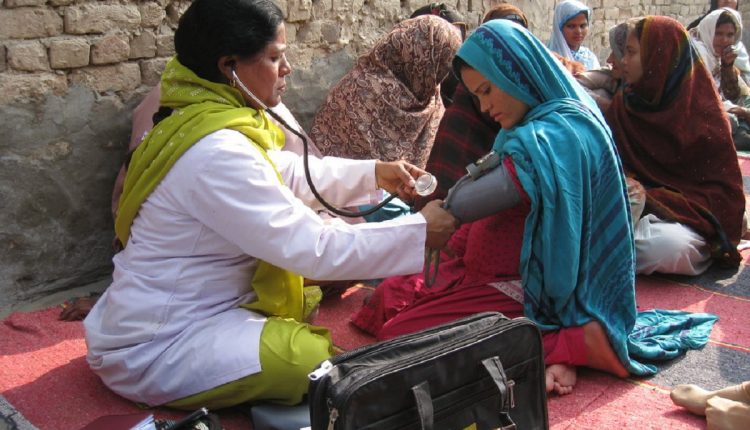
#HealthForAll – How Well Is Pakistan Keeping Up?
With a population of 200million people, Pakistan is leaving some behind.
Every year on April 7, the World Health Day is observed. This year the theme set by the World Health Organization is Universal Health Coverage: Everyone, Everywhere.
#HealthForAll is also WHO’s number one goal – to ensure that ‘everyone can obtain care they need, when they need it, right in the heart of the community’. It aims at leaving no one behind.
While progress is being made in many countries to achieve this goal, it is important to note where Pakistan stands. Does the country’s health sector provide all its citizens the basic health coverage?
According to Pakistan Economic Survey 2017 report, the government has spent only 0.5% to 0.8% of its GDP in the last one decade on health. It is way less than the WHO benchmark, which is at least 6%. With less than 1% of the GDP spent on healthcare, the universal health coverage index of Pakistan is 40 as compared to 65 for the rest of the world.
Despite many people’s presumption, public hospitals in the country do not provide free services for everyone. The state only provides for one-fourth of Pakistan’s health services, while the private sector covers the rest.
On the other hand, a significant sum of health coverage is borne by private or public-sector companies who provide for their employees’ health insurance. But what about those who do not fall in this spectrum? Does the state provide for those not insured through any organization? The answer is no.
With a score of just 40 in the index, Pakistan stands at 162nd on the Service Coverage Index of the Universal Health Coverage target of the Sustainable Development Goal 3, to which it is a signatory. This makes Universal Health Coverage as a basic human right in Pakistan seem like a pipedream. As the coverage is not just about providing for the infrastructure of health facilities and financial security, it is also ensuring an increase in the number of medics. But currently, there is a smaller number of Pakistan’s population in the health occupation.
However, the incumbent government’s Sehat Sahulat Program launched in February this year envisions to provide free medical treatment to approximately 80 million people. The treatment would be worth Rs720,000 in both private or state-owned hospitals, which will be provided to over 80 million households below the poverty line. The Sehat Sahulat Card would be provided to 15 million people over the next two years.
This is a great step towards providing #HealthForAll. However, there is a long way to go before the country’s healthcare sector becomes one that is welfare oriented.

